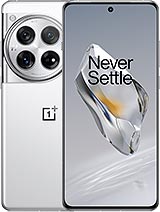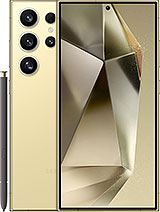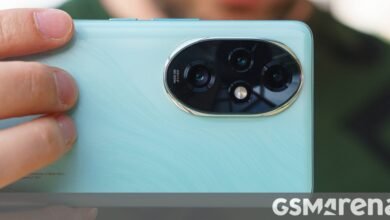OnePlus 12 vs. Samsung Galaxy S24 Ultra

So, you’ve decided to really treat yourself and get a true flagship heavy-hitter. Welcome to the big leagues, and particularly the interesting showdown between Samsung’s still relatively “hot off the presses” January-release Galaxy S24 Ultra and the best OnePlus currently has to offer in the OnePlus 12. It is admittedly a bit older and technically came out last year in December 2023, but that has mostly resulted in a nice and steady depreciation in price, and it does not actually take away from the truly premium nature of the OnePlus 12.
The two devices are definitely worthy of rubbing shoulders. They are based on the same flagship Snapdragon 8 Gen 3 chipset, and both offer excellent all-around hardware from build quality through excellent large AMOLED displays and large batteries all the way to some of the most potent camera setups currently out there.
Table of Contents:
For starters, you can compare the complete specs sheets or directly continue with our editor’s assessment in the following text.
Size comparison
The OnePlus 12 and Samsung Galaxy S24 Ultra are both very large devices. It should come as no surprise with their 6.82 and 6.8-inch respective display diagonals. The OnePlus is arguably easier to handle single-handedly due to its taller and narrower form. With a width of 79 mm, the Galaxy is frankly too much for most people to comfortably stretch their thumb across. However, the OnePlus 12 is notably taller than the S24 Ultra, arguably making it less pocket-friendly.
The OnePlus 12 is also a bit thicker than the S24 Ultra at 9.2 mm, compared to 8.6 mm. This was presumably done to allow for the bigger 5,400 mAh battery inside the OnePlus, compared to 5,000 mAh inside the S24 Ultra. Interestingly enough, despite rocking a bigger battery, the OnePlus is slightly lighter than the Galaxy, tipping the scale at 220 grams against 232 grams. It’s not an insignificant difference either, but one that can be felt in practice, especially if you don’t add a case on the phone.
Speaking of cases, both phones utilize high-quality materials. The OnePlus 12 has an aluminum frame sandwiched in between Gorilla Glass Victus 2 on the front and another sheet of undisclosed Gorilla Glass on the back.
The Samsung trumps that with a titanium frame and the newer and supposedly sturdier Gorilla Glass Armor on its front and back.
The S24 Ultra also offers “full-fat” IP68 ingress protection, which should allow for dips in fresh water for up to 30 minutes at a time at up to 1.5 meters depth. All the while, the OnePlus 12 settles for a less impressive IP65 rating. If you are not versed in IP ratings, that means both phones have the highest possible level six protection against solid particles and differ in their water protection.
Both devices have their ups and downs in handling and in-hand feel. Neither is particularly easy to wild one-handed, but we would probably say that the OnePlus, with its curvier body both on the front and back, sits a bit more comfortably in the hand. On the flip side, we did like the subjective ergonomics of the newly flattened display of the S24 Ultra better.

Color and visual design-wise, neither phone is really pushing the envelope. The OnePlus 12 arguably has the more “out there” finish option in the Flowy Emerald variant. Then again, Samsung has a wider color choice, particularly if you count the colorways available exclusively through the Samsung store.
Finally, before we finish this section, we need to mention the S Pen on the Galaxy S24 Ultra since we won’t get a better opportunity. It remains one of the most versatile and well-integrated, not to mention one of the last available phones with bundled pressure-sensitive stylus. It’s one of the S24 Ultra’s unique features.
Display comparison
Both phones have pretty huge displays – 6.82 inches on the OnePlus 12 and 6.8 inches on the Galaxy S24 Ultra. We already mentioned that they have slightly different aspect ratios. The resolution is a bit different, too, but both panels are close in pixel count with QHD+ resolution and have very similar pixel density. You can technically expect to get the same sharpness and image clarity from either device.
Samsung has put a special anti-reflective coating on the S24 Ultra display exclusively this year, which does reduce reflections quite noticeably, but one of its arguably small but still present downsides is also a bit of reduced image clarity. It is very subtle, and most users probably won’t notice it, so we won’t hold it against the Galaxy and will celebrate its excellent anti-reflective properties instead.
Of course, there are other ways of battling reflection, notably through display brightness. The OnePlus 12 is advertised alongside a frankly ridiculous-sounding max brightness figure of 4,500 nits, while the Galaxy S24 Ultra markets a “measly” 2,600 nits. However, these numbers are wildly confusing since they are achieved in vastly different ways and scenarios. In our standardized brightness testing, the S24 Ultra managed 1,447 nits of max brightness, compared to 1,155 nits on the OnePlus 12. Both are very respectable figures that allow for an excellent experience even in direct sunlight, which is the important bit, but be sure not to get fooled by marketing on this point.
Speaking of brightness figures, we naturally arrive at HDR capabilities. Both phones offer an excellent HDR experience, but we have to give the OnePlus 12 the edge for its Dolby Vision support as well as 10-bit colors. For some inexplicable reason, in our book, Samsung still uses 8-bit color panels even in its best flagship. It offers HDR10+ support and no Dolby Vision, but that is a lot more understandable given the ongoing HDR format wars.
On the topic of colors, we will note that the S24 Ultra had quite a muted color rendition on release, even in Vivid mode. Samsung has already addressed the issue via a software update. We won’t go as far as saying that all of the alleged display issues of the S24 Ultra have been addressed, but at least the colors are a lot more saturated post-update. You can dig into the whole fiasco further if you are interested.
Both phones offer 120Hz refresh rate and LTPO tech for dynamic refresh rate switching. Again, we encourage you to dig into the weeds of the particular refresh rate switching behavior for yourself if that interests you, but for all intents and purposes, despite slightly different approaches to refresh rate handling, both phones offer a very essentially similar experience on this front.
Battery life
Both phones have pretty large batteries. However, OnePlus managed to cram in a slightly bigger 5,400 mAh pack compared to the 5,000 mAh of the Galaxy S24 Ultra. Mind you, these are rated capacities and won’t necessarily correspond to the daily charges you will get. Still, 400 mAh is a notable difference in the otherwise unsurprisingly comparable battery scores.
Both phones manage great test numbers and Active Use Score numbers across the board. The Galaxy handles gaming loads better, while the OnePlus lasts longer with Wi-Fi web browsing. These are pretty comparable and equally impressive results overall.
Charging speed
When it comes to charging speed, the OnePlus 12 has a clear and rather big edge over the Galaxy S24 Ultra. The OnePlus 12 supports 100W SuperVOOC wired charging, and you even get a charging adapter in the retail box.
In contrast, for one reason or another, Samsung continues to stick to its 45W PD + PPS charging for the Ultra. You don’t get a charger in the box either, and you must buy one separately.
Beyond wired charging, the OnePlus 12 also supports 50W wireless charging through a proprietary OnePlus standard. The Galaxy S24 Ultra supports standard Qi/PMA charging but at a much slower 15W.
As for reverse charging, the OnePlus 12 also supports up to 10W, while the S24 Ultra is limited to 4.5W. Both are fast enough for charging a smartwatch or TWS headphones in their case.
Speaker test
Both phones have what is essentially a hybrid stereo setup with a dedicated bottom-firing speaker and an amplified earpiece. The OnePlus also features output holes for the sound on the top bezel, which helps a bit in balancing the output and the stereo separation effect.
On the flip side, in our testing, we found the Galaxy S24 Ultra to be a bit louder overall, managing a VERY GOOD score compared to the OnePlus 12’s GOOD score.
Quality-wise, both phones sound very nice and are flagship-grade with a rich and wide sound stage. The S24 Ultra arguably has slightly clearer mids, which is important for things like dialogue. The OnePlus 12 has a slightly better bass response. Not that you can expect stunning bass from either.
Performance
Both phones are based on Qualcomm’s current “cream of the crop” Snapdragon 8 Gen 3 chipset. Hence, you can expect the best performance possible. However, it is worth noting that the OnePlus 12 is using the “basic” SM8650-AB variant of the chipset, whereas Samsung has a special “for Galaxy” variant, dubbed the SM8650-AC.
The difference between the two is small but still notable. The Snapdragon 8 Gen 3 for Galaxy has its prime Cortex-X4 core clocked higher at a maximum of 3.4 GHz, compared to 3.3 GHz on the regular version of the chip. The rest of the CPU cores and clocks are the same across the two. The SM8650-AC for Galaxy also has a 1,000 MHz max clock on its Adreno 750 GPU, compared to about 903 MHz on the regular variant.
Besides that, both phones have comparable additional hardware, like 12GB of LPDDR5X RAM on the Galaxy and the base model of the OnePlus 12. The OnePlus 12 does go up to 16GB of RAM in its higher storage tiers, and there is even an elusive 24GB RAM 1TB storage model.
Speaking of storage, both phones use fast UFS 4.0 chips in 256GB, 512GB or 1TB total capacity. Neither phone has expandable storage.
Our OnePlus 12 review unit is the 16GB/512GB model, while the Galaxy S24 Ultra unit is the 12GB/512GB one. We also enabled the performance mode on the OnePlus while testing.
The higher max clock speeds on the Galaxy shine through in benchmark results. The S24 Ultra manages better single and multi-core XPU scores than the OnePlus 12. Once you throw in additional tests and consideration through AnTuTu and its much more compound benchmarking suite, the performance scores will be equal.
GPU performance in 3DMark is identical across both devices. In fact, despite the slightly higher max clock speed of the Galaxy S24 Ultra, the OnePlus 12 tends to score a bit higher in tests.
Neither phone excels in thermal management. Both thermal-throttle rather aggressively and lose a big chunk of its performance with torture-testing. We would say that the S24 Ultra is a bit less jittery when it comes to throttling and ramps down performance more smoothly than the OnePlus, but in practical terms, they are essentially on equal footing.
This is a good place to mention software support. Samsung has promised seven years of software support (major OS updates and security patches) on the S24 generation. In contrast, you can expect four major OS upgrades and five years of security patches on the OnePlus 12.
There is also the matter of the new Galaxy AI that debuted on the S24 generation of devices. You can read more about those in our dedicated One UI 6.1 review but the list includes:
- Circle to search.
- Chat translations.
- Generative AI message creation.
- Webpage summarization.
- Language interpreting for live calls or in-person convos.
- Recorded speech transcribing and summarization.
- Generative AI wallpapers and edits in the Gallery, such as content-aware fill or object moving and removal.
Since we won’t get a better chance to mention this, it is worth noting that the Galaxy S24 Ultra also has video output through its USB Type-C port and Samsung DeX, the company’s desktop-optimized OS environment.
The OnePlus 12 lacks video output and any advanced desktop productivity environment. It does offer a built-in IR blaster, though, which is nice.
Camera comparison
Both phones have a proper flagship camera setup at their disposal with a combination of a regular, a telephoto and an ultrawide snapper on the back. However, the S24 Ultra arguably has the edge regarding available camera hardware and versatility.
The OnePlus 12 is rocking a 50MP main snapper with OIS, accompanied by a 64MP, 3x periscope zoom camera, also optically stabilized and finally, a 48MP ultrawide camera with autofocus to double as a macro shooter. On the front, we have a 32MP fixed-focus selfie.
As for the Galaxy S24 Ultra, its main camera is one of Samsung’s latest and greatest high-resolution 200MP units, equipped with OIS and Laser autofocus. It is accompanied by not one but two telephotos – a 10MP, 3x, OIS-enabled regular snapper and a 50MP, 5x, periscope-style cam, also with OIS. Finally, on the rear is a 12MP ultrawide with dual-pixel PDAF and Super Steady video capture. The selfie on the S24 Ultra is a mere 12MP in resolution but also has dual pixel PDAF for extra clear shots.
Samsung also somehow managed to squeeze proper 30fps video at 8K out of the S24 Ultra as well while the OnePlus 12 is limited to 24fps.
Photo quality
Comparing the main cameras on the two phones is a rather tough task. We would say that overall, the OnePlus 12 has slightly more natural and laid-back processing with less processing and sharpening applied.
In contrast, the S24 Ultra tends to sharpen lines a bit more but definitely doesn’t go overboard with it. Interestingly, this does change on a scene-to-scene basis, and in certain photos, we noticed that the OnePlus was exhibiting more aggressive sharpening.









Samsung Galaxy S24 Ultra main cam (1x)
Dynamic range and contrast are excellent on both phones, perhaps with a slight edge to the OnePlus. In typical Samsung fashion, the S24 Ultra tends to have slightly more saturated colors on average. Things have gotten a lot more laid-back color-wise in camp Samsung over the last few years, though, so the difference isn’t huge once again. Just like with sharpening, we noticed that depending on the conditions, the OnePlus 12 has a more saturated color palette in some cases.
As we said, it’s hard to choose a favorite between the two and draw any concrete and consistent conclusions. They definitely trade blows from scene to scene.
There is arguably a bit more difference between the two 3x telephoto cameras on the phones. Here, it is relatively noticeable that the OnePlus 12 is applying more heavy-handed processing with cranked contrast and saturation. This results in a more processed look. We see a slightly narrower dynamic range, too. Still, in absolute terms, these are some excellent photos. We are just comparing it against the 3x cam of the Galaxy S24 Ultra.






Samsung Galaxy S24 Ultra telephoto cam (3x)
Its photos are clearly softer and have less aggressive processing. Colors look more natural. Dynamic range is slightly better, too, and contrast looks more natural to the eye.
For the sake of thoroughness, here are some samples from the dedicated 5x periscope telephoto camera of the S24 Ultra, which the OnePlus 12 doesn’t have a direct counter for.



Samsung Galaxy S24 Ultra telephoto cam (5x)
Both ultrawide cameras perform masterfully. Surprisingly, the significant difference in resolution does not really translate into a difference in fine detail, at least to our eye. The OnePlus 12 has a slightly more contrasty and processed look with more saturated colors overall.






Samsung Galaxy S24 Ultra ultrawide cam
The S24 Ultra tends to do more laid-back processing overall and has a notably wider dynamic range. However, there is some noticeable noise here and there on surfaces, which the OnePlus 12 tends to address better.
While the OnePlus 12 puts up a valiant effort with its selfies, we have to give the edge to the S24 Ultra in this department. Not only is the autofocus helping out massively, but everything appears much sharper and better defined. Skin texture and tones also look better on the Galaxy with more fine detail despite the resolution disparity.



Samsung Galaxy S24 Ultra selfie cam
We kind of like the OnePlus 12 low light photos better than the S24 Ultra, but more on a subjective level. Objectively, both phones do great, but they are just a bit different. The OnePlus tends to expose a bit higher on average and hence has better-developed shadows. However, it still manages to handle light sources masterfully.
The S24 Ultra has more natural, less saturated colors and less aggressive processing overall. It is not afraid to leave a bit of noise behind.



OnePlus 12 low-light: 0.6x • 1x • 3x




Samsung Galaxy S24 Ultra low-light: 0.6x • 1x • 3x • 5x
The comparison between the two ultrawides is pretty similar to the main cameras.
As far as 3x telephotos go, we tend to like the one on the S24 Ultra at night better. Its colors are much better than the oversaturated and way too warm color palette of the OnePlus 12.
Video quality
There are a few noteworthy differences in the video capture capabilities of the two phones, but arguably none that will actually make a difference to most people. Samsung has notably managed to enable proper 30fps capture at 8K resolution, while the OnePlus 12 is limited to 24fps. Even so, 8K video capture on a smartphone is currently more of a gimmick that doesn’t actually offer any substantial benefit. You can also do 120fps at 4K on the Galaxy S24 Ultra, while the OnePlus 12 is limited to 4K@60fps.
To the benefit of the OnePlus 12, it can do 480fps at 1080p, which the Galaxy can’t. The two also differ in their HDR capture capabilities. The OnePlus 12 can capture Dolby Vision, while the Galaxy can do HDR10+. On the selfie side of things, the S24 Ultra can do 4K@60fps, while the OnePlus only does 4K@30. The Galaxy also offers 32-bit sound capture instead of standard 24-bit on the OnePlus.
As we said, however, none of these differences are likely to be noticed by your average user.
At 4K resolution, quality across the two phones’ main cameras is expectedly very comparable in detail. The OnePlus 12 tends to have more laid-back video processing with more natural colors and less contrast. The S24 Ultra is much more contrasty with more saturated colors. Dynamic range is comparable but perhaps a bit wider on the S24 Ultra.



OnePlus 12 video: 0.6x • 1x • 3x




Samsung Galaxy S24 Ultra video: 0.6x • 1x • 3x • 5x
These observations apply to the 3x telephoto 4K footage as well, where the sample from the S24 Ultra looks much more heavily processed with both saturation and contrast cranked. Of course, when it comes to higher zoom levels, the S24 is naturally going to do better thanks to its 5x periscope telephoto.
Things appear to be a bit flipped when it comes to comparing the two ultrawides. This time around, the footage from the OnePlus seems to have more contrast and more saturated colors.
Overall, both phones expectedly capture really competent videos in good light across all cameras. The same goes for low-light videos as well, though here, the two phones are set further apart in their approach to processing.



OnePlus 12 low light video: 0.6x • 1x • 3x




Samsung Galaxy S24 Ultra low light video: 0.6x • 1x • 3x • 5x
The OnePlus 12’s exposure tends to be a bit brighter than the Galaxy S24 Ultra on average and has better-developed shadows, arguably better light source handling too and better colors.
In contrast, low-light videos from the S24 Ultra are notably darker and have much warmer and yellow color renditions. If we had to choose, we would probably give a slight edge to the OnePlus 12 in low light.
Verdict
The Samsung Galaxy S24 Ultra is the vastly more popular device due to Samsung’s well-oiled marketing and distribution machine. But the popularity is well deserved, too. The Galaxy is probably the tougher phone of the two and has a much more refined feature set, including things like the unique S Pen hardware and software and now the Galaxy AI features and seven years of software support. It arguably has the more versatile camera setup as well.
Undeniably, the OnePlus 12 is the more niche product out of the two, but it does have its allure, too. Battery endurance and charging, for instance, are two points where it beats the Galaxy hands down. And it’s not like it’s notably worse than the Galaxy in any other department. The OnePlus 12 is an incredibly well-rounded device through and through.
- The lower price.
- The 10-bit display and Dolby Vision support.
- The larger battery and better battery life.
- The much faster charging rate.
Get the OnePlus 12 for:
- The tougher build and better ingress protection.
- The S Pen.
- The brighter and less reflective display.
- The louder and slightly clearer speakers.
- The slightly faster burst performance and longer software support.
- The more versatile camera setup with a 5x telephoto.
- The Galaxy AI features.
Get the Samsung Galaxy S24 Ultra for:
































